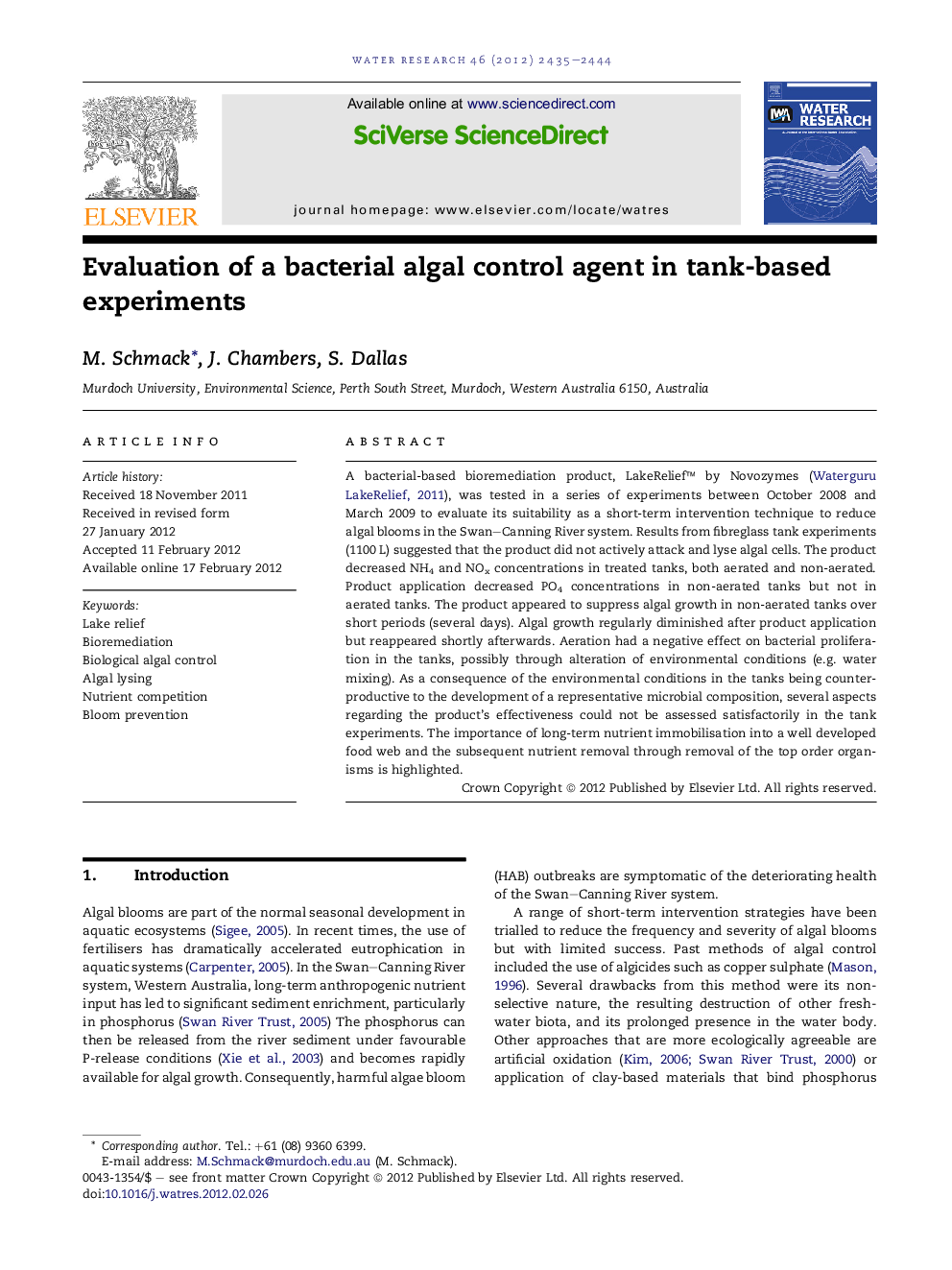| Article ID | Journal | Published Year | Pages | File Type |
|---|---|---|---|---|
| 4482946 | Water Research | 2012 | 10 Pages |
A bacterial-based bioremediation product, LakeRelief™ by Novozymes (Waterguru LakeRelief, 2011), was tested in a series of experiments between October 2008 and March 2009 to evaluate its suitability as a short-term intervention technique to reduce algal blooms in the Swan–Canning River system. Results from fibreglass tank experiments (1100 L) suggested that the product did not actively attack and lyse algal cells. The product decreased NH4 and NOx concentrations in treated tanks, both aerated and non-aerated. Product application decreased PO4 concentrations in non-aerated tanks but not in aerated tanks. The product appeared to suppress algal growth in non-aerated tanks over short periods (several days). Algal growth regularly diminished after product application but reappeared shortly afterwards. Aeration had a negative effect on bacterial proliferation in the tanks, possibly through alteration of environmental conditions (e.g. water mixing). As a consequence of the environmental conditions in the tanks being counterproductive to the development of a representative microbial composition, several aspects regarding the product’s effectiveness could not be assessed satisfactorily in the tank experiments. The importance of long-term nutrient immobilisation into a well developed food web and the subsequent nutrient removal through removal of the top order organisms is highlighted.
► The tested bacterial-based bioremediation product did not actively lyse algal cells. ► The product suppressed algal growth in tanks over short periods (several days). ► Testing product performance in tank-based experiments was hindered by limitations. ► No long-term nutrient immobilisation, thus unsuitable for natural wetland treatment.
